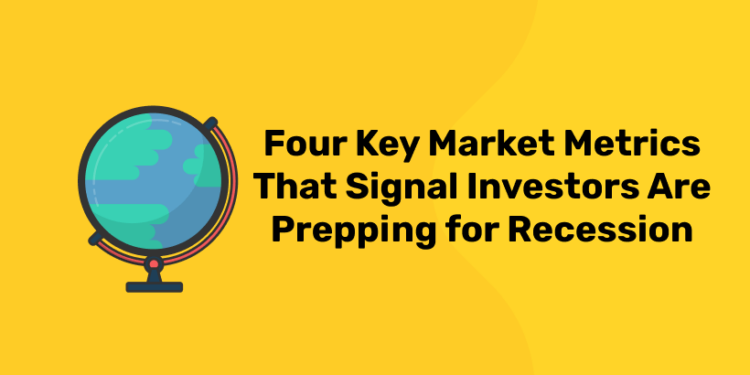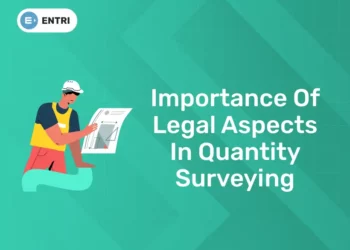It seems like money managers at the biggest investment banks in the world are all talking about recession. But talking isn’t all investors are doing. A look at the markets shows asset managers are moving money around in ways that suggest they see a recession coming.
Four Key Market Metrics That Signal Investors Are Prepping for Recession
- Corporate bond market distress index
- Break-even inflation rates
- Five-year, Five-year forward inflation rate
- U.S. Treasury yield curve
Corporate bond market distress index :
Corporate bonds are a key source of funding for U.S. non-financial corporations and a key investment security for insurance companies, pension funds, and mutual funds. Distress in the corporate bond market can thus both impair access to credit for corporate borrowers and reduce investment opportunities for key financial sub-sectors. In a February 2021 Liberty Street Economics post, we introduced a unified measure of corporate bond market distress, the Corporate Bond Market Distress Index (CMDI), then followed up in early June 2022 with a look at how corporate bond market functioning evolved over 2022 in the wake of the Russian invasion of Ukraine and the tightening of U.S. monetary policy. Today we are launching the CMDI as a regularly produced data series, with new readings to be published each month. In this post, we describe what constitutes corporate bond market distress, motivate the construction of the CMDI, and argue that secondary market measures alone are insufficient to capture market functioning.
How do we recognize distress?
The descriptions above highlight that market distress is multifaceted and that measures of any one aspect of market functioning will likely present an incomplete picture of distress. To construct the CMDI, we coalesce information on seven aspects of market functioning—primary market volumes, primary market pricing, secondary market volumes, secondary market liquidity, secondary market pricing, secondary market default-adjusted pricing, and quoted pricing on non-traded bonds—using insights from the machine learning literature on image recognition and language processing to construct a unified measure of market functioning. As described in technical detail in our staff report, the CMDI flags market distress as periods when metrics of more aspects of market functioning are signaling distress, rather than when metrics of individual features of market distress are higher on average.
To understand the difference between these two concepts of coalescing information from multiple individual measures, consider the following simple example. Suppose that we only used bid-ask spreads and primary market volume. Which of the following two situations is more distressed?
- The bid-ask spread is in its top tenth historical percentile, so that liquidity in the market is poor, while primary market volume is also in its top tenth percentile, so that issuance is nonetheless good.
- Both the bid-ask spread and issuance volume are at their corresponding historical medians.
From the perspective of a single measure that averages across metrics, market distress is at the same level in both situations, as the average metric is in the center of the distribution in both cases. A measure that instead identifies distress as distress along a greater number of features will perceive the second situation as being potentially more concerning as the bid-ask spread and issuance volume provide conflicting signals in the first example.
The chart below plots the time series of the CMDI together with the first principal component (PCA)—a sophisticated way of averaging across metrics—of the seven features of market functioning that underlie the CMDI. The chart shows that, while both approaches correctly identify periods of extreme distress—when both the average feature indicates distress and the plurality of measures indicate distress—the PCA overidentifies market distress when market conditions are relatively calm. Our simple example illustrates this intuition: the averaging approach is more likely to be influenced by extreme observations of any one measure. In the staff report, we show that the CMDI is a better predictor of both future realizations of other measures of financial conditions and future real activity realizations than the PCA, suggesting that the CMDI does indeed provide a “cleaner” signal of market distress.
Break-even inflation rates
The breakeven inflation rate is a measurement that aims to predict the effects of inflation on certain investments, by analyzing known market inflation rates from recent years. Though this measurement is neither perfect nor guaranteed, it is generally a good estimate of what investors can expect from the market in the years to come.
This rate calculation is typically used when investors are deciding between buying TIPS – or Treasury inflation-protected securities – and nominal Treasuries. It may help indicate which one will hedge against inflation better.
The breakeven inflation rate provides a look at possible inflation trends in the future. It also helps investors determine whether Treasuries or TIPS are the better bargain at that moment in time.
Calculating the Breakeven Inflation Rate
In order to calculate a breakeven inflation rate, one needs to simply compare the yield of an inflation-based bond (like TIPS) with a nominal bond of the same maturity period. The difference between how the two have performed during that time frame represents the breakeven inflation rate, or the rate that inflation would have to be for an investor to “break even” – or earn the same return – between purchasing TIPS or nominal Treasuries.
So, let’s say that you have a 10-year CD (certificate of deposit) that has yielded 5% over the course of the investment (nominal yield). You also hold an inflation-linked investment that has yielded 2.9% over the same time period (real yield).
Nominal yield – real yield = breakeven inflation rate
In this case, your breakeven inflation rate is 2.1% (5 – 2.9 = 2.1).
Why the Breakeven Inflation Rate Matters
So, what does this number actually mean? Take a look at the example above.
This would indicate that over the next 10 years, today’s investors expect inflation to average around 2.1%. Of course, that number isn’t guaranteed. It’s simply an expectation based on the inflation rate of today and over the last 10 years.
Though it isn’t a guaranteed forecast, the breakeven rate can still be helpful to investors who want to outperform inflation.
Using that same example: if you believe that in the next 10 years, inflation will average more than 2.1%, you may want to consider purchasing Treasury inflation-protected securities (TIPS). If you believe that inflation will average less than 2.1% in the coming decade, a nominal Treasury might be the better choice for your portfolio.
Five-year, Five-year forward inflation rate
Inflation expectations are simply the rate at which people—consumers, businesses, and investors—expect prices to rise in the future. They matter because actual inflation depends, in part, on what we expect it to be. If everyone expects prices to rise, say, 3 percent over the next year, businesses will want to raise prices by (at least) 3 percent, and workers and their unions will want similar-sized raises. All else equal, if inflation expectations rise by one percentage point, actual inflation will tend to rise by one percentage point as well.
Five-year, Five-year forward inflation rate is a measure of expected inflation (on average) over the five-year period that begins five years from today.
The 5Y/5Y forward uses the difference in market interest rates for a period of 5 years, starting 5 years in the future. In general, it is as an average 10Y bond interest rate minus an average 5Y bond interest rate.
This is the metric that is widely regarded as inflation expectations and can be used for all major economies separately.
The 5Y/5Y forward uses the difference in market interest rates for a period of 5 years, starting 5 years in the future. In general, it is as an average 10Y bond interest rate minus an average 5Y bond interest rate. Currently, in 2020 we take actual market interest rates with a maturity date of 2030 and subtract the rates for 2025.
What the 5Y/5Y forward is telling us today
You might think with all the news of Biblical floods of money printing that inflation expectations are off the charts. Inflationists everywhere are telling us that the end of the dollar is nigh and inflation will be the killer. Even most bitcoin investors see inflation of the dollar as the only route to end of the dollar and the takeover by bitcoin.
They are all wrong. The global economy is stuck in the grips of an overindebted deflation. Money is credit and credit is not expanding, therefore no inflation. It doesn’t matter how you slice it.
U.S. Treasury yield curve
The U.S. Treasury yield curve refers to a line chart that depicts the yields of short-term Treasury bills compared to the yields of long-term Treasury notes and bonds. The chart shows the relationship between the interest rates and the maturities of U.S. Treasury fixed-income securities. The Treasury yield curve (also referred to as the term structure of interest rates) shows yields at fixed maturities, such as one, two, three, and six months and one, two, three, five, seven, 10, 20, and 30 years. Because Treasury bills and bonds are resold daily on the secondary market, yields on the notes, bills, and bonds fluctuate.
Yield curve risk refers to the risk investors of fixed-income instruments (such as bonds) experience from an adverse shift in interest rates. Yield curve risk stems from the fact that bond prices and interest rates have an inverse relationship to one another. For example, the price of bonds will decrease when market interest rates increase. Conversely, when interest rates (or yields) decrease, bond prices increase.
Investors can use the yield curve to make predictions on where the economy might be headed and use this information to make their investment decisions. If the bond yield curve indicates an economic slowdown might be on the horizon, investors might move their money into defensive assets that traditionally do well during recessionary times, such as consumer staples. If the yield curve becomes steep, this might be a sign of future inflation. In this scenario, investors might avoid long-term bonds with a yield that will erode against increased prices.















